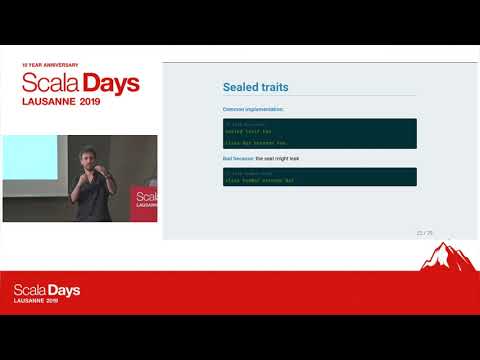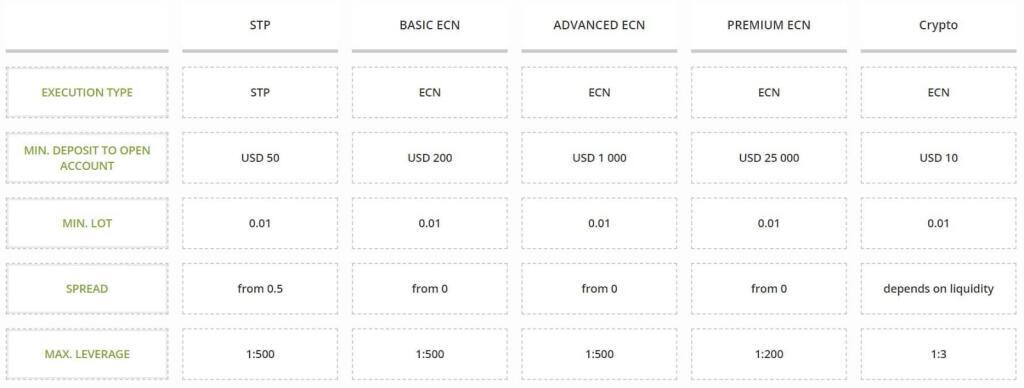Best Stocks to Buy in September 2023 The Motley Fool

Shareholders can thank Disney's adaptability to an ever-changing media landscape for their outsized returns. In the past 20 years alone, Disney has gobbled up Pixar Animation Studios, Marvel Entertainment, Lucasfilm (of Star Wars fame) and much of 21st Century Fox. ESPN and the Disney Channel are just two of its many cable properties.
Urban Outfitters Joins Rank Of Stocks With RS Ratings Over 90 - Investor's Business Daily
Urban Outfitters Joins Rank Of Stocks With RS Ratings Over 90.
Posted: Wed, 13 Sep 2023 07:00:00 GMT [source]
Wells is also still accruing costs for litigation and customer remediation. Amid these pressures, the bank is working to improve its internal processes as it lowers expenses, expands product offerings, and strengthens https://1investing.in/ technology platforms. These efforts should help Wells Fargo navigate an economically uncertain year ahead. Notably, the Federal Reserve imposed an asset cap of $1.95 trillion, which remains in place today.
Global Payments
The analyst highlighted that Dell delivered impressive upside to July quarter revenue and earnings per share (EPS), driven by broad-based strength across both infrastructure and client segments. Specifically, the notable upside in the infrastructure segment was fueled by GPU-enabled servers. Medical device company Medtronic (MDT) recently announced a quarterly dividend of $0.69 per share for the second quarter of fiscal 2024, payable on Oct. 13. MDT has increased its annual dividend for 46 consecutive years and has a dividend yield of 3.5%. Overall, the analyst sees the possibility of some of the ongoing market concerns fading over the next 12 months.
Shares of database storage provider MongoDB MDB jumped 76.3% during the second quarter, and the firm also reported better-than-expected first-quarter results for its fiscal year. MongoDB caught the attention of investors with its announcements of new tools for vector research—part of the development of generative AI—and data processing. However, if you’re looking to earn the returns of the index, it’s vital that you hold the index fund through the ups and downs, giving the investment the time to ride out the volatility. Otherwise, you’ll probably end up selling low and buying high, as the index gyrates.
In fact, Eric has recommended 41 different 1,000%+ stock market winners in his career. Plus, he beat 650 of the world’s most famous investors (including Bill Ackman and David Einhorn) in a contest. And today he’s revealing his next potential 1,000% winner for free, here.
What This Year’s Top-Performing Stocks Tell Us
That beats the S&P 500's total return by nearly 490 percentage points. Its Nike Direct business has been performing well and international growth has also been solid. Nike is connecting with customers through, both, its digital offerings and through those of its retail partners. Nike stock has seen multiple dips and rises over its past year journey. In addition to it, the company is always in the news due to its innovative product. Volatile nature and trending stock make Nike one of the best day trading stocks for 2023.
- The rise of middle classes in emerging markets should especially provide a boost.
- Including dividends, shares in Home Depot rose about 1,240% over the past decade, according to data from YCharts.
- Iger oversaw the launch of Disney+ in 2019 and likely doesn't want to miss Chapek's prediction.
- Once you have set all of your strategies, you can be successful as a day trader by investing in these stocks.
- Earlier this year, the company raised its annual dividend for fiscal 2024 by about 2% to $2.28 per share.
That’s its best first-half performance since the company went public in January 1999. These criteria create a list of stocks that is then sorted by one-year percentage performance (including dividend payments, assuming reinvestment). The top ten stocks are selected for this list with no additional filtering. Many investors also do technical analysis of a stock, which means analyzing historical movements in the stock's price to attempt to predict future movements.
At the center of everything we do is a strong commitment to independent research and sharing its profitable discoveries with investors. This dedication to giving investors a trading advantage led to the creation of our proven Zacks Rank stock-rating system. Since 1988 it has more than doubled the S&P 500 with an average gain of +24.32% per year. These returns cover a period from January 1, 1988 through July 31, 2023. Zacks Rank stock-rating system returns are computed monthly based on the beginning of the month and end of the month Zacks Rank stock prices plus any dividends received during that particular month.
Private Companies
But Etsy absolutely skyrocketed, growing at more than twice the rate of overall e-commerce. To make any of the lists, a stock had to be traded publicly for all of 2021. We’d like to share more about how we work and what drives our day-to-day business. Petrobras increased 55.5% in the second quarter, having regained investor trust by managing its spending and reducing leverage. The RealReal REAL gained 76.2% in the second quarter, reversing its 2022 loss of 62.8%. Michael Burry, manager of the hedge fund Scion Asset Management, sent the stock up after he revealed he has a stake in the luxury goods resale platform.
- Cory has been a professional trader since 2005, and holds a Chartered Market Technician (CMT) designation.
- Equitrans stock rose 70.5%, led by the news that construction of its Mountain Valley Pipeline would move forward as part of a bipartisan debt-ceiling deal passed by Congress.
- The Buffett bears will say he has lost his fastball, but Berkshire continues to produce market-beating returns in most years despite its massive size.
- A recent Morgan Stanley report predicts inflation will dip down to 2.4% by the end of 2023, the rate hikes will end and the economy will flatline but not shrink.
- Well, any investor can participate, even with very little knowledge.
However, this is just a fraction of its estimated $153 billion (and growing) market opportunity as more retailers shift their focus to online sales. The marketplace saw $10.5 billion in merchandise volume in the second quarter of 2023, 47% higher than the same quarter in 2022. Mercado Pago processes almost $170 billion in annualized volume, with almost three-fourths coming from outside the company's e-commerce platform. Although I don't have a crystal ball that tells me what stocks will deliver the best returns, I've tried to do the next best thing.
Zacks Research is Reported On:
The stocks on this list have achieved market-beating gains thanks to impressive and sustained buying pressure. With the government shifting its focus towards a greener environment, electric vehicles cars are increasing in demand. With the company increasing its investment and innovation within the electric vehicles industry, Tesla is one of the best day trading stocks to invest in today.
Examples are hypothetical, and we encourage you to seek personalized advice from qualified professionals regarding specific investment issues. Our estimates are based on past market performance, and past performance is not a guarantee of future performance. Established in 2002, Roku Inc. is an American company offering digital streaming services and hardware. Roku Inc. being a unique OTT (Over the Top) hardware as well as service provider, has seen extraordinary growth due to a consistent increase in OTT viewership.
Many or all of the products featured here are from our partners who compensate us. This influences which products we write about and where and how the product appears on a page. Learn how Elliott Wave Forecast can help you improve your success. Is a trusted life insurance and asset management company based in the Netherlands, Dutch.
With more investors growing aware of how concentrated the S&P 500 has become, there has been a significant inflow of money into an equal-weighted index strategy over recent weeks. Technology stocks have dominated, as you will see below where we summarize the best and worst performers of the first half of 2023. Benedict also noted that the company's efforts to drive improved productivity and profitability are gaining traction. Crum commodity in economics acknowledged that HAS stock has been a relative laggard over the past several years due to many fundamental issues that resulted in unhappy investors. The analyst contended that the recently announced price hikes by Verizon and AT&T indicate a stabilizing competitive backdrop for wireless. He further noted that customers continue to hold onto their phones for longer, which is reducing device upgrade costs and stabilizing churn.

The company hasn't produced any revenue yet but has treatments in its pipeline. True, AAPL stock traded sideways for the first few years of the 21st century, but an explosion of innovation soon put an end to that. Under the visionary leadership of the late Steve Jobs, Apple essentially reinvented itself for the mobile age, launching revolutionary gadgets such as the iPod, MacBook and iPad. Known as Tesla Motors when it went public in 2010, the company adopted its current moniker in 2017 to reflect an expansion into lithium ion batteries and solar energy. As much as Samsung has emerged as a major supplier to the tech sector's supply chain, consumers know it best for its ubiquitous smartphones, televisions and home theater systems.
Reasons that make Tesla Inc. Best Day Trading Stock
And although the market is well above its recent bear market lows, plenty of stocks are trading for significantly less than they were a year or two ago. For technology stocks, enthusiasm for companies that may benefit from the artificial intelligence boom continued from the first quarter. One of the best short-term investments can be high-flying stocks that see outsized gains over the near term. But picking the best performing stocks with outstanding near-term performance is very challenging. Following the hottest stocks helps you find out what the market likes, but if you’re investing in these individual stocks, you’ll need to research the business and understand what the opportunity is.
Still, it was a much better showing than what was seen in the second quarter of 2022, when 103 stocks rose while 759 fell. The top-performing U.S.-listed stocks of the second quarter that are covered by Morningstar analysts include Wayfair W (up 89.3%), CureVac CVAC (up 49.5%), and Palantir Technologies PLTR (up 81.4%). Other notable winners include Carnival CCL (up 85.5%) and Nvidia NVDA (up 52.3%).



